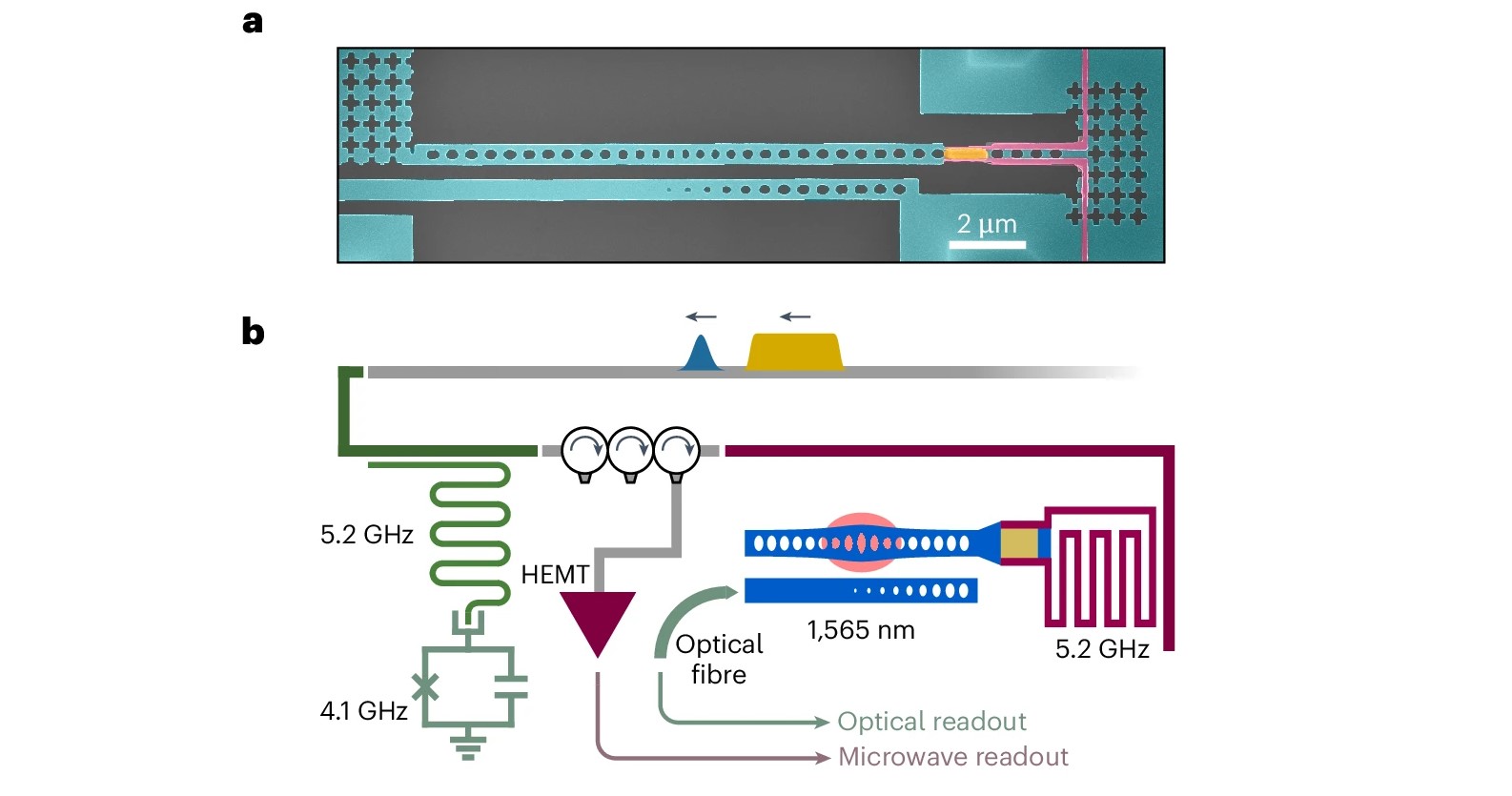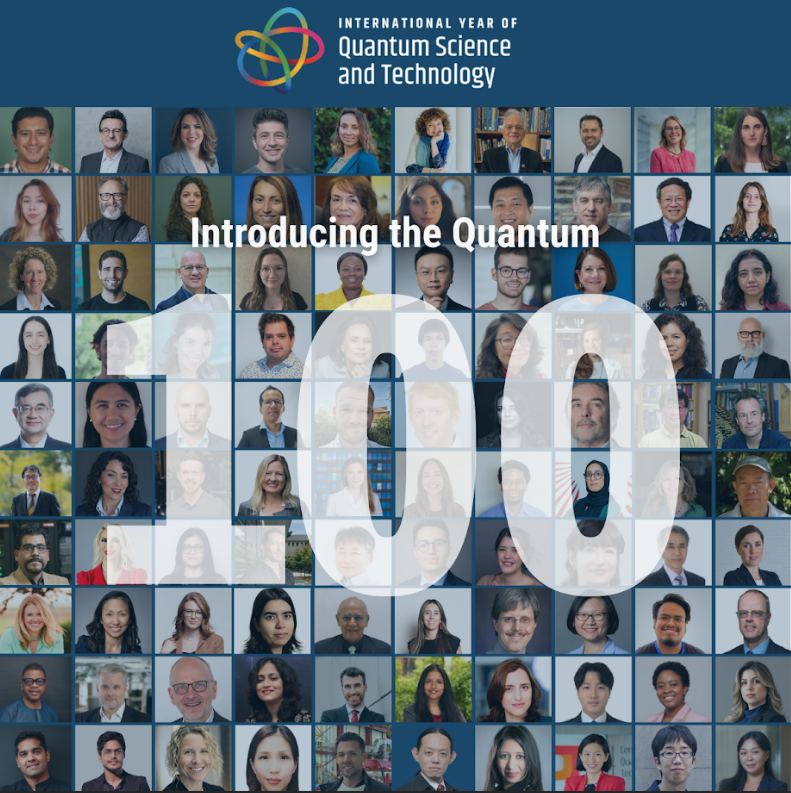Insider Brief:
- Scaling superconducting quantum processors is a major challenge due to the complexity of cryogenic wiring and microwave components required for qubit control and readout.
- Researchers from QphoX, Rigetti Computing, and Qblox propose optical readout as a solution, using a piezo-optomechanical transducer to convert microwave signals into optical signals.
- Their study demonstrates an optical readout fidelity of 81%, showing that this approach can minimize decoherence and function comparably to traditional microwave-based methods.
- Optical readout could enable more scalable quantum processors by reducing heat load, freeing up cryogenic space, and simplifying qubit control infrastructure.
- Image Credit: Piezo-optomechanical transducer, Thiel et al., 2025, Figure 1
The ingenuity of engineering lies in its balance between theoretical problem-solving and practical execution. Now, that same ingenuity may help address one of quantum computing’s biggest challenges: scalability. Superconducting quantum processors, one of the most advanced architectures for quantum computing, require intricate cryogenic wiring and microwave components to function. However, as these systems grow in size, this infrastructure becomes increasingly difficult to manage, limiting their scalability. A joint effort by QphoX, Rigetti Computing, and Qblox, recently published in Nature Physics, explores a potential solution: using an optical transducer to read out superconducting qubits.
The Scaling Issue
Superconducting qubits, such as transmons, operate at extremely low temperatures—often below 10 millikelvin—to maintain quantum coherence. Current quantum processors feature hundreds of qubits, but fault-tolerant quantum computing will likely require thousands to millions of them. This scaling introduces a fundamental engineering challenge: the cryogenic infrastructure needed to support so many qubits is prohibitively large. The sheer number of coaxial cables, amplifiers, and other cryogenic microwave components required for qubit control and readout not only generate heat but also take up valuable space inside dilution refrigerators.
One proposed alternative is to replace conventional cryogenic microwave wiring with optical fibers, which have a smaller footprint and lower thermal conductivity. However, qubits are controlled and read using microwave signals, meaning an efficient way to convert these signals into optical ones is needed.

Microwave-to-Optical Transduction: The QphoX Solution
QphoX has developed a transducer using piezo-optomechanical technology, which enables the conversion of microwave photons into optical photons. This interface allows qubit signals to be read using optical fibers, reducing thermal load and making it possible to scale quantum processors more efficiently.
To test this, researchers connected a superconducting qubit to an optical transducer and successfully measured its state using an optical fiber. What they found was that the transducer not only performed the conversion effectively but also minimized decoherence, meaning it did not introduce excessive thermal noise or unwanted stray optical photons that could disrupt qubit operation.
The study achieved an optical readout fidelity of 81%, demonstrating that this method can function at a level comparable to traditional microwave readout techniques. While improvements in efficiency and noise reduction are still needed, this work establishes a proof of concept for scalable optical readout.
Implications for Quantum Computing
Optical readout could significantly reduce the complexity of quantum computing hardware. By leveraging dense optical multiplexing, a single optical fiber could replace multiple microwave cables, simplifying control and readout infrastructure in large-scale quantum systems. Additionally, the reduced heat load from optical fibers could allow for more compact and efficient cryogenic setups.
In the official release, Dr. Thierry van Thiel, lead quantum engineer at QphoX emphasized the broader impact of this work: “Microwave-to-optics transduction is a rapidly emerging technology with far-reaching implications for quantum computing. Our work demonstrates that transducers are now ready to interface with superconducting qubit technology.”
Rigetti Computing, which has actively developed full-stack quantum computing solutions, sees this as a key step toward modular architectures that integrate emerging technologies. “Developing more efficient ways to design our systems is key as we work towards fault tolerance. This innovative, scalable approach to qubit signal processing is the result of our strong partnerships with QphoX and Qblox and showcases the value of having a modular technology stack,” said Dr. Subodh Kulkarni, Rigetti CEO.
Next Steps
While this study represents an important milestone, challenges remain. Optical readout fidelity must improve to match the best microwave-based techniques, and further work is needed to optimize noise performance and integration. However, as researchers refine transduction efficiency and develop more advanced optical interfaces, this study could support the foundation that builds the next generation of scalable superconducting quantum computers.
Contributing authors on the study include T. C. van Thiel, M. J. Weaver, F. Berto, P. Duivestein, M. Lemang, K. L. Schuurman, M. Žemlička, F. Hijazi, A. C. Bernasconi, C. Ferrer, E. Cataldo, E. Lachman, M. Field, Y. Mohan, F. K. de Vries, C. C. Bultink, J. C. van Oven, J. Y. Mutus, R. Stockill, and S. Gröblacher.

















